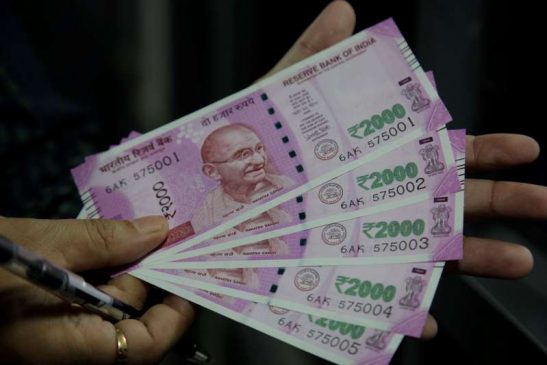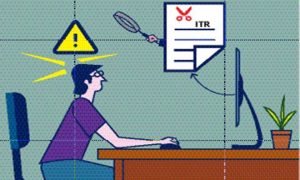The Income Tax Department has recently started the annual income tax return filing cycle by notifying the new income tax return (ITR) forms for assessment year (AY) 2019-20. These new forms come with a set of changes (essentially more detailed disclosures) with which taxpayers have to contend with.
The Income Tax Department has also released the e-filing “utilities” (i.e. excel versions which can be used for online filing) for ITR 1, 2 and 4 for AY 2019-20 which are relevant for individual taxpayers. These are available for download at www.incometaxindiaefiling.gov.in. Balance tax forms utilities are not yet released and are expected to be available shortly.
Below are a few important aspects, which a salaried employee should note for filing his/her India income tax return for AY 2019-20.
When should you file the income tax return?
Individuals who are not required to get their books of accounts audited (eg: no business/ professional income above a certain threshold) are required to file their income tax return for AY 2019-20, latest by 31 July 2019.
The annual TDS certificate on salary payments (Form 16) is required to be issued by the employer latest by 15 June 2019. This form provides the details of salary income and taxes deducted at source. In addition, Form 16A is issued for tax deducted on other personal income (bank issues it for tax deducted on interest income).
The income and tax reported in Form 16 and Form 16A is summarised in Form 26AS which can be downloaded from the income tax portal. It is important that the income and tax reflected in Form 26AS is reconciled with the income tax return filed by individuals to avoid attracting “mismatch” notices from tax authorities.
Forms for Filing of ITR
The forms to be completed are dependent on the class of taxpayer and nature/ quantum of income that the taxpayer earns. Below are the forms relevant for salary earners who do not have profit and gain from business or profession:

Consequences of missing 31 July 2019 due date
If the return is not filed by the due date, i.e. 31 July 2019, individuals can still file a “belated return” by 31 March 2020. However, they will face the following consequences:
# Interest: If there is a tax payable by the individual even after reducing the tax deducted at source by the employer on salary income and by the payer of other personal income, the same is required to be paid as advance tax. Shortfall of advance tax (if any) is payable as self-assessment tax along with applicable interest of 1 per cent per month on the due amount up to the date of payment of tax. If this self-assessment tax is paid only at the time of filing the belated return, the above interest will keep on increasing up to the date of payment of tax.
# Penalty: If the taxpayer fails to file return of income within the due date, he will have to pay a penalty as per the below table:

# Carry forward of losses: Taxpayers are not allowed to carry forward certain losses. For instance, losses under the head capital gains are allowed to be carried forward for adjustment against the future gains only if the tax return is filed within the due date.
# Prosecution for not filing: If taxpayers do not file his return of income, the income tax officer has the power to initiate prosecution proceedings on the individual. The risk of prosecution starts from imprisonment term of 3 months to 2 years with fine. If the tax owed exceeds Rs 25 lakh, the period may extend to 7 years. This risk does not exist where net tax payable is less than Rs 3000.
eductions that can be claimed
If you have missed submitting investment proofs to your employer, it need not be a cause for concern. You can claim deductions of investment made during the year at the return filing stage. For example: specified payments like life insurance premium, deposits made in Public Provident Fund, NPS, tuition fees, etc., are eligible to be claimed as deduction at the return filing stage. These deductions are subject to the prescribed caps.
Further, individuals can also claim income deduction for the interest payment made on the housing loan up to a maximum amount of Rs 200,000 (assuming loan has been taken for purchase or construction) of self-occupied property. However, there is no such maximum limit for the interest payment deduction if the property is let out. If there is a loss after adjustment of rental income, maximum loss of Rs 200,000 can only be adjusted in the current AY and the remaining will be carried forward for adjustment in future years.
Form 67
If the individual has claimed a foreign tax credit in his India tax return, tax authorities will allow the same only if Form 67 is furnished. This form is in addition to the filing of income-tax return. To access this form, individual is required to log in into the e-filing portal using valid credentials. This form is required to be furnished on or before the due date of filing return of income.
Aadhaar number
Every person who is eligible to obtain Aadhaar number shall provide Aadhaar details in the income tax return form. If you have not received your Aadhaar card yet but have applied for it, then you would be required to provide the enrolment ID in your tax return.
Once the return is filed, acknowledgement form ITR V is generated. This form needs to be verified either manually (by signing and sending to the tax authorities) or the same can be done electronically. One of the electronic verification options is through Aadhaar OTP, where an OTP is sent to the mobile number linked with the Aadhaar card.
It is essential to remember the above key points while filing your income tax return. Also, make sure you have all the information needed and do not make any omission or mistake while filing your IT returns.



































